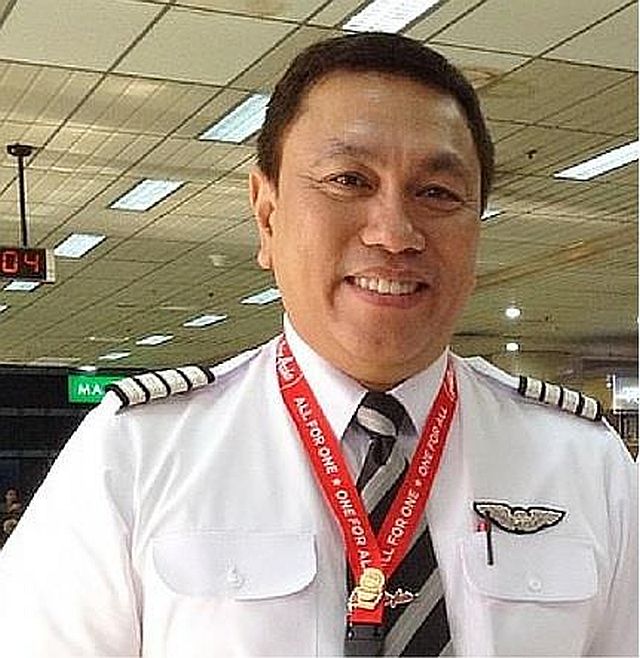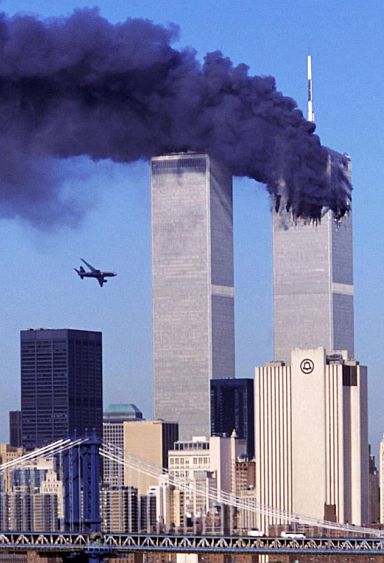Terror attack on Cebu flight to Japan remembered

Comendador
( Read first part : AirAsia PH CEO recalls the 1994 bombing of Philippine Airline’s Flight 434 )
December 11, 1994. Philippine Airlines Flight 434 to Narita, Japan from Manila was ready to board at around 3:30 a.m.
Pakistani terrorist Ramzi Yousef was among the passengers. Security was lax. There were no baggage scanners.
The 747 was built for international flights, but since it was going to stop in Cebu first, they could not park the jet in terminal 1. It also could not fit in terminal 4.
This made it easier for Yousef to slip through the security check with nitroglycerin hidden in a bottle of contact lens solution. Wires were hidden in the heels of his shoes.
Yousef wore a Casio watch that he would use as a timer for the bomb.
They took off for Cebu at around 4 a.m. It was during this time that Yousef went into the restroom to assemble the bomb.
After returning from the restroom, Yousef changed his seat to 26K, the seat where he placed the bomb underneath. The plane landed in Cebu at around 5 a.m. where Yousef disembarked and more passengers bound for Japan boarded.
Taking his seat from Cebu to Japan was 24-year-old Haruki Ikegami.
‘Take action’
The flight began smoothly, but a little more than an hour before they reached Narita, flight systems engineer Dexter Comendador and Captain Eduardo Reyes smelled smoke coming from the cabin.
“It smelled like firecrackers,” Comendador said. “We thought someone firecrackers on board because it was close to Christmas.”
Reyes also smelled the smoke. “Walang makita at nawala yung amoy(We didn’t find anything and the smell disappeared),” Comendador told Cebu Daily News.
The plane was flying at 32,000 feet.
At around 9 a.m., still about an hour away from Narita, the aircraft suddenly jerked.
The purser entered the cockpit. “Sir, a bomb exploded. One dead, two wounded,” he told Captain Reyes.
“Take action,” Reyes told Comendador.
The pilots were scared, but calm. Errors could cost the lives of hundreds of passengers.
Comendador monitored cabin for depressurization. The pressurization alert lit up.
“Naku, may butas (Oh no, there’s a hole)!” Comendador informed Reyes. He then proceeded to correct the pressurization problem.
“Sir, the smoke is too heavy below,” the purser told Reyes.
“Take action,” Reyes told Comendador.
“Sir, smoke removal procedure complete,” Comendador replied.
“Dex, bumaba ka doon (go down). Check if it was really a bomb,” Reyes ordered Comendador.
“Sir, sumabog na nga (it already exploded), it’s really a bomb!” Comendador replied, half jokingly.
But as a military officer, who once belonged to the Philippine Air Force, Comendador complied and checked the situation in the cabin.
The blast ripped vertically through seat 26K. It missed the engine by a hairline.
Ikegami, the man who took Yousef’s seat, fell through the hole created by the blast. He died; his eyes wide open.
Comendador entered the cabin and saw the youngest cabin crew member holding Ikegami’s dead body. The flight attendant made it appear that
Ikegami was still alive by placing an oxygen mask over his face so that the other passengers would not panic.
The cabin crew filled the hole with a blanket.
“If the hole had gotten any bigger, they all would’ve gotten sucked in,” Comendador said. After stabilizing the situation in the cabin, Comendador returned to the cockpit.

The 9/11 attacks were borne out of “Operation Bojinka” – a terrorist plot conceived in Manila which decided to test an improvised bomb on PAL Flight 434 from the Mactan Cebu International Airport to Narita, Japan on Dec. 11, 1994. (AP PHOTO)
‘Mayday’
“Sir, nakatagilid na yung yoke (The yoke is slanted already),” Comendador told the pilots.
They began to lose control of the plane’s autopilot mode.
The blast destroyed all turning mechanisms on the plane and all the plane’s navigation systems. The pilots made the mayday call.
“Mayday, mayday, Philippines 434, bomb exploded on board,” Reyes called out to Japan’s air traffic control. The Japanese air traffic controllers, however, responded in Japanese.
“Di namin siya naintindihan (we didn’t understand him),” Comendador said. The entire frequency went quiet.
Suddenly, an American traffic controller took over.
“Philippines 434 I’m taking over,” an air traffic controller from a US military base on Okinawa responded to the mayday call.” I will vector you back to Naha,” he told the pilots.
But there was a problem.
“Dex, bakit ayaw magturn(Why won’t it turn)?” Reyes asked Comendador.
“Sir, sira ang cable (Sir, the cable is broken),” Comendador replied.
Comendador suggested disengaging the autopilot. But this could cause the aircraft to suddenly bank to the right. The pilots might lose control of the aircraft.
Before disengaging the autopilot, Reyes calmly made an announcement to the passengers, “We’ll be landing at Naha soon, please remain in your seats and fasten your seat belts.”
Some passengers were crying. One Japanese passenger even began to write his will.
Reyes, Comendador and First Officer Jaime Herrera, however, remained focused on landing the plane safely. The plane’s ailerons, the part of the plane that enables turning maneuvers, were disabled. And its elevators, or what controls the aircraft’s ability to ascend and descend, also failed.
A US blackbird or military stealth plane appeared.
“Please check our undercarriage,” Reyes radioed the US pilots, asking the blackbird pilots to check if a bomb had been left behind and if the landing gears had been released.
“Your gears are solid,” the US pilots replied. The pilots prepared for landing in Naha.
“Help me with the elevator,” Reyes commanded Comendador and Herrera.
The runway at Naha was now in sight. “Pull!’ Reyes commanded the co-pilots to slow the airplane’s throttle.
The pilots breathed a sigh of relief. They safely landed the plane. Japanese responders and news reporters rushed to the aircraft. The passengers first disembarked. The crew and the pilots then followed. Japanese investigators interrogated them for 12 hours.
Homecoming
The crew returned to Manila the next day.
President Fidel Ramos awarded them for their quick thinking and for saving the lives of the rest of the passengers aboard Flight 434.
“There was no fanfare. We were just handed the awards,” Comendador said.
They underwent debriefing, which Comendador said actually made the trauma worse.
“We had forgotten about it, but the debriefing made us relive those traumatic moments.” Yousef had also returned to Manila after the bombing.
An accidental fire led authorities to his apartment. There, they discovered bomb-making materials and Yousef’s laptop.
His laptop contained detailed plans to blow up airliners, flight schedules, and bomb-making manuals. His plans also listed the World Trade Center in New York City, and the Pentagon in Washington DC as targets. This evidence was turned over to the US Federal Bureau of Investigation (FBI).
Yousef fled the Philippines shortly after the apartment fire. But the following year, in 1995, US authorities were able to hunt down and arrest Yousef in Islamabad, Pakistan.
Yousef now sits in a maximum-security prison in Colorado, convicted with the help of the evidence found in Manila, for the 1993 World Trade Center bombing, the attack on flight 434, and the ‘Bojinka’ plot.
Most of the crew of 434 resigned and migrated to other countries after the attack. The pilots, however, continued their careers with commercial airliners.
Comendador has worked at all the local airlines and at several commercial airlines abroad. He returned home to join Philippines AirAsia, where he now serves as its interim Chief Executive Officer.
Comendador, however, added, “While being a part of the crew that landed 434 was a harrowing experience, it wasn’t the worst experience of my career.”
What was his worst experience? It wasn’t another terrorist attack or deadly close-call.
“It was Yolanda. Especially the aftermath,” he said, referring to the Super Typhoon that killed 6,000 people and devastated the Visayas in 2013.
But that’s a story for another day.
Disclaimer: The comments uploaded on this site do not necessarily represent or reflect the views of management and owner of Cebudailynews. We reserve the right to exclude comments that we deem to be inconsistent with our editorial standards.
